If you are looking wholesale lighting solutions, click here.

Light is the key to mesmerizing indoor spaces, captivating photos, and cinematic magic. Color temperature wields the power to transform white light’s hue.
Yet, understanding it for optimal lighting designs can be confusing. Our ultimate guide demystifies color temperature, applications, and best practices, ensuring you maximize this crucial lighting element.
Let’s get started.
Color temperature is the name given to different shades of white color emitted by various artificial and natural light sources. The color temperature is measured in Kelvin (K).
For example, lamps emitting within 2500 K to 3500 K emit orange, yellowish light, inducing a comfortable environment, while higher temperature lights >4000 K give pure white light with bluish hue synonyms to alertness and attentiveness.
Perhaps the easiest way to understand this concept is by looking at different shades of sunlight throughout the day.
In the early morning, we perceive bright white light (5000 K), but slowly, as time passes, the color temperature gets lower (3000K), and we start to see red and yellow light hues.
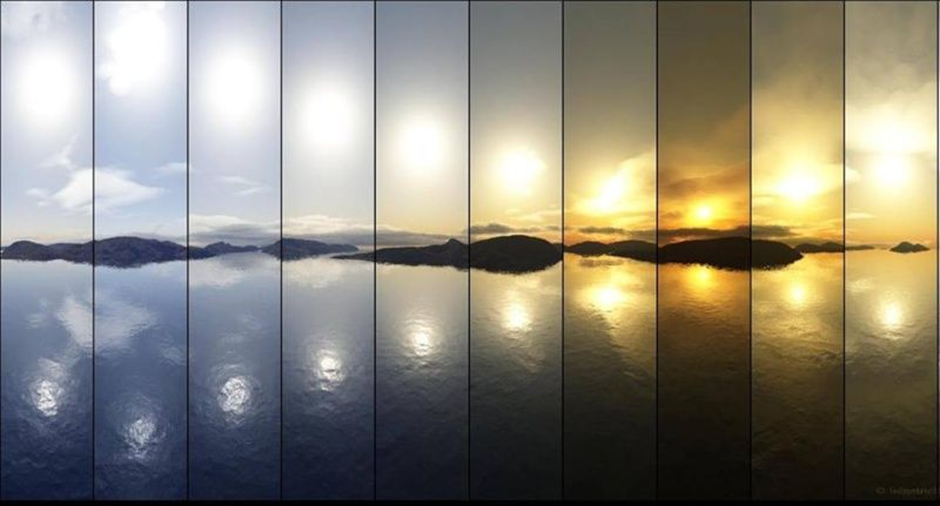
You might wonder why scientists chose temperature, a degree of hotness and coldness, to define shades of color. It will make sense once we understand the correlated color temperature (CCT) theory.
In the early 1900s, Max Planck, a German physicist, discovered that when certain materials (theoretical black bodies) are heated to a specific high temperature, they emit a distinct shade of light color (electromagnetic radiation).
Different temperatures meant different shades of white light. Like when the iron melts under intense heat, it gives off a bright reddish-yellow color. This phenomenon is now known as Planck’s law of radiation.
We usually associate hot with yellow shade and cold with whitish blue, but that’s not the case regarding color temperature.
Lower heat temperatures between 2500K – 3500K (4040 °F-5840 °F) produce warmer light, while higher heat temperatures ranging between 4500K-6000K (7640 °F- 10340 °F) produce white light.
Fun fact: The Sun burns at 5722 K ( 10,000 °F) and emits white light. It appears redder as the light bends and scatters in our atmosphere.
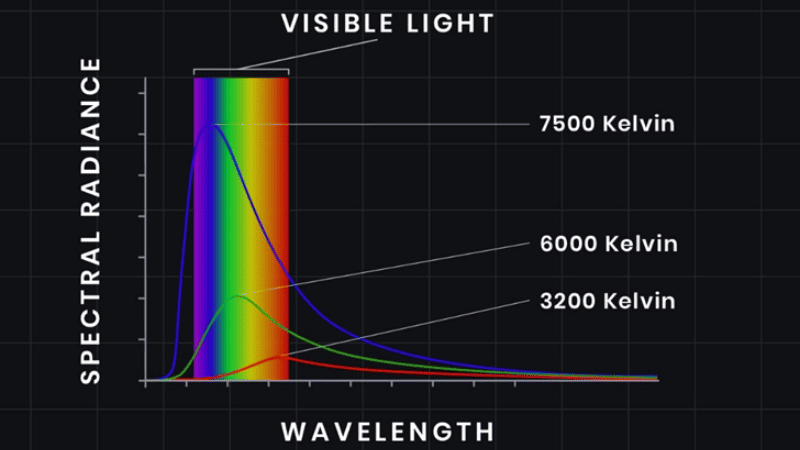
As discussed earlier, Max Planck’s discovery of the Radiation Law helped define the color temperature of different light sources. Since Kelvin (K) is the base unit in “Thermodynamics,” it became the main unit to define color temperature instead of Fahrenheit and Celsius.
The color temperature of any light bulb is usually labeled on the packaging and will be within the range of the Kelvin Scale. Interior light designers or photographers use this scale to find the best shade for the task.
Typical candlelight is on the lowest end of this spectrum, around 2000 K, and radiates reddish and orange light, while cool white light common in hospitals and other high-functioning areas represents the other extreme, about 6500 K.
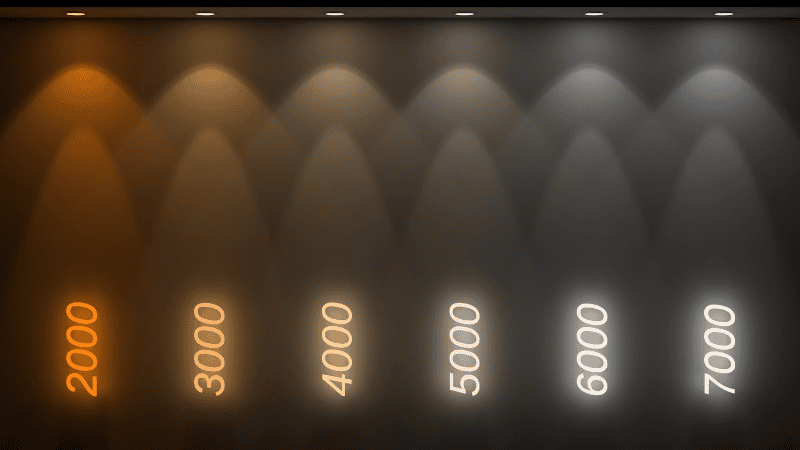
People mostly talk about light in Kelvin, which shows how warm or cool it is. But there’s this Mired scale that’s kind of like the opposite – warmer light is higher on it. Still, Kelvin’s been around forever and is the go-to lingo in lighting.
The mired scale is mostly used in photography and cinematography. It describes color temperature shifts more intuitively and understandably.
Lower mired values represent cooler temperatures, and higher ones refer to hotter temperatures, which is a more natural way to look at things. Here is how to calculate it.
Mired (M) = 1,000,000 / Kelvin
Here’s a simple example to illustrate the concept of the Mired scale:
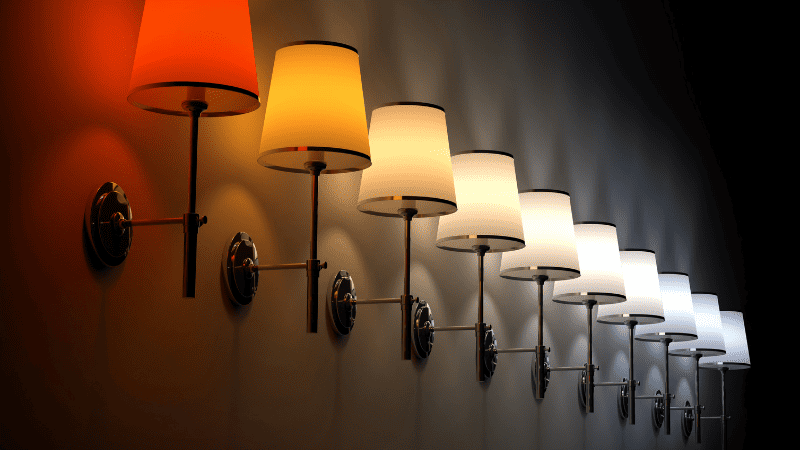
Let’s say you have two light sources:
Now, let’s calculate the Mired values for each of these light sources using the formula:
Mired = 1,000,000 / Kelvin
For Light Source A:
Mired = 1,000,000 / 5000 Kelvin = 200 MK^-1
For Light Source B:
Mired = 1,000,000 / 3200 Kelvin = 312.5 MK^-1
Now, let’s interpret the Mired values:
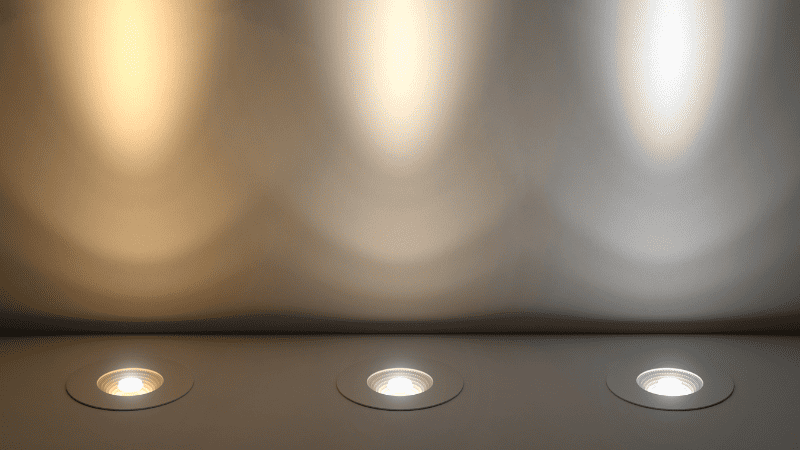
So, even though Light Source A has a higher Kelvin temperature (5000K) than Light Source B (3200K), its Mired value is lower, indicating that it produces cooler light. Photographic filters and gels are also categorized in mired shifts.
Color temperature is not merely used to enhance the aesthetics of the place. It can affect us on a neurological level.
Studies show that the color temperature of LED indoor lighting has a significant psychological effect on the occupants. We’ve broken down four key areas of our daily life most affected by lighting.
Sleep helps us rejuvenate, heal, and grow, making it a critical pillar of our lives. Light sources with higher color temperatures, especially those with a bluish tint (e.g., 6500K), can suppress the production of melatonin, a hormone that regulates sleep.
Research shows that higher color temperatures (3000 K to 6500 K) can lead to insomnia, depression, and heart diseases, which is concerning.
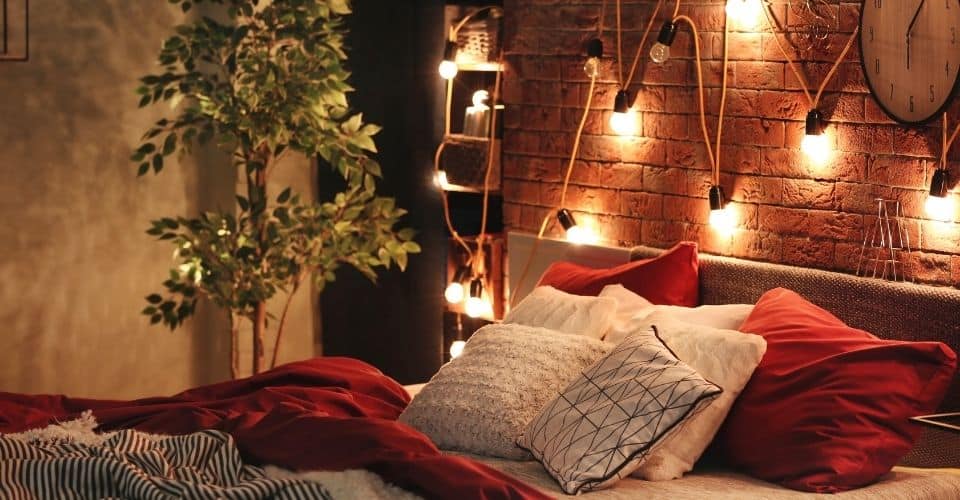
So, for better sleep and optimal melatonin production, experts recommend installing warm white light (2700K to 3000K) in your bedroom.
Our brains have adapted to sunlight (approx. 5000 K) for millions of years, and it’s only natural that we are more productive and alert under artificial lighting with higher color temperatures.
However, productivity is not only dependent on color temperature. According to a recent study, the level of illumination, aka brightness, also plays a significant role in productivity.
So, combining bright luminance around 500 lux and 4000 K temperature is best for practical work.
Studying is more of a subjective matter, and it boils down to your preference. Slightly warmer color temperatures around 3200 K to 4000 K may create a comfortable environment for deep study sessions.
However, cool white and daylight lights (around 4000- 5000K) enhance classroom productivity and focus. Many libraries combine warm and cool light to create a perfect environment for relaxed study sessions.
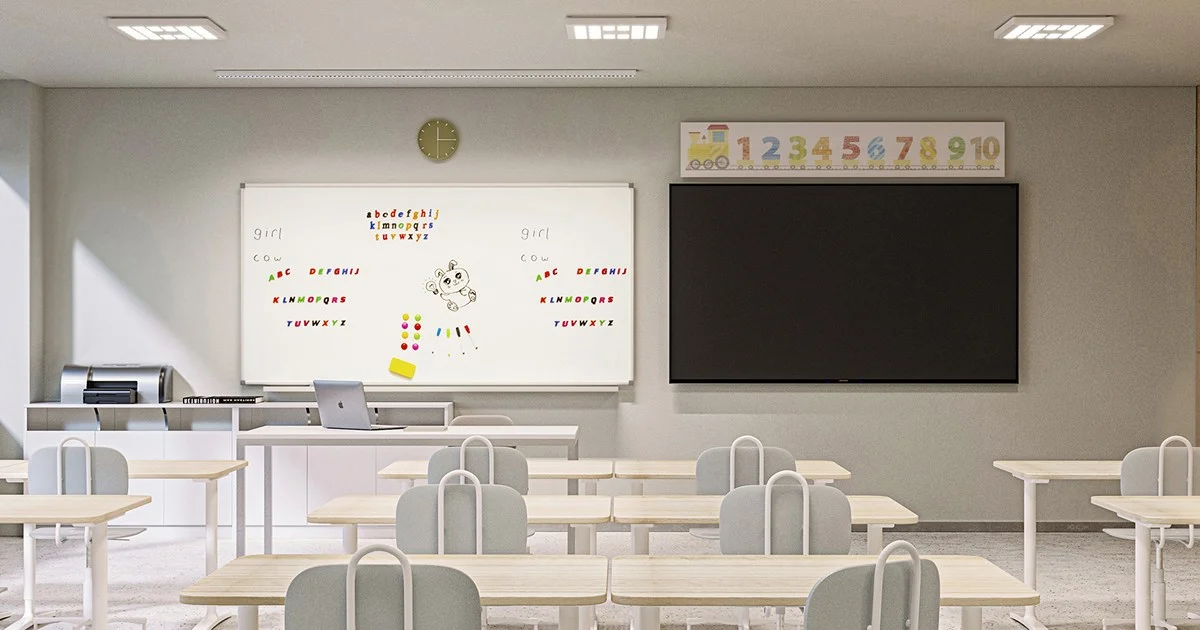
Visual perception is our ability to process information based on visible light. It plays a major role in photography and cinematography in creating audience engagement.
Adjusting the color temperature can dramatically change the visual impact of a photograph or artwork.
Surprisingly, you might not even recognize this on a conscious level while watching a movie, but it’s critical in setting the tone and mood for the scene.
Warmer temperatures create a romantic and cozy atmosphere, while cooler temperatures are perfect for a contemporary look. A combination of color temperature, color rendering, contrast, visual acuity, and depth can make all the difference.
The major advantage of playing with color temperature is your complete control over the environment’s productivity, physiology, and aesthetics.
Knowing different temperatures, a photographer can create the desired scene using filters even if the outdoor light is unsuitable.
Similarly, interior designers use CCT to create the perfect ambiance. Here is a summary of different color temperatures for your reference.
| Temperature | Name | Impression | Uses |
| 1000-2000 K | Candlelight | Dim light, warm, cozy | Rare |
| 2500-3200 K | Golden hour, Warm white | Relaxing, comfortable, serene | Home, restaurants, camping |
| 3200-4500 K | Fluorescent, Daylight | Energizing, alertness, productivity-boosting | Halls, cinema, conference rooms, classrooms. |
| 4500 - 5000+ K | Cool white | Intense | Hospital, warehouse, Factory, workshops, labs |
Now that we have discussed the basics of color temperature let’s move toward a practical aspect of color temperature. The applications of color temperature are vast and versatile.
Amazingly, research shows that even a little tweak in color temperature can cause a significant difference in aesthetics, ambiance, and productivity of the place. Here are the major applications of color temperature in contemporary lighting designs.
Interior designers use different color temperatures to match the aesthetic and ambiance of architecture and furniture. Warmer lights add an extra layer of elegance to vintage furniture and invoke feelings of comfort and relief.
Similarly, futuristic designs are blended with cool whites for a contemporary look. The interior design of offices and workplaces slightly differs, focusing more on the place’s alertness, productivity, and brightness.
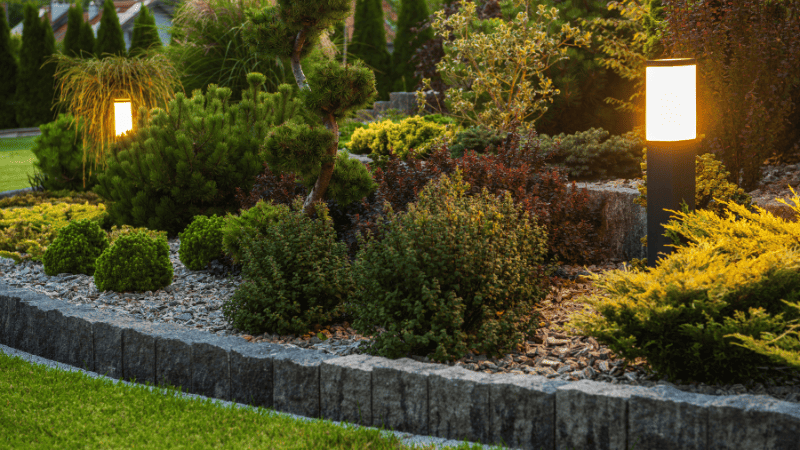
Outdoor lighting design mainly focuses on safety and security. The major factors defining outdoor lights are color rendering index (CRI), temperature, and brightness. CRI is a measure of how correctly our eyes perceive any color. Higher CRI (80-95) means better visuals.
In the case of the outdoors, higher CRI, CCT (4500K – 6500 K), and brightness are necessary. Occasionally, there is an aesthetic appeal to outdoor lighting as well, but the deciding factors remain the same.
Perhaps the most important application of color temperature is in photography and filmmaking. Photographers use CCT filters, gels, white balance, and camera settings to adjust color temperature in real-time.
This is especially true if the shooting is outdoors, where the sky has its color temperature. Cinematographers use color temperature to enhance the emotional appeal of the scene.
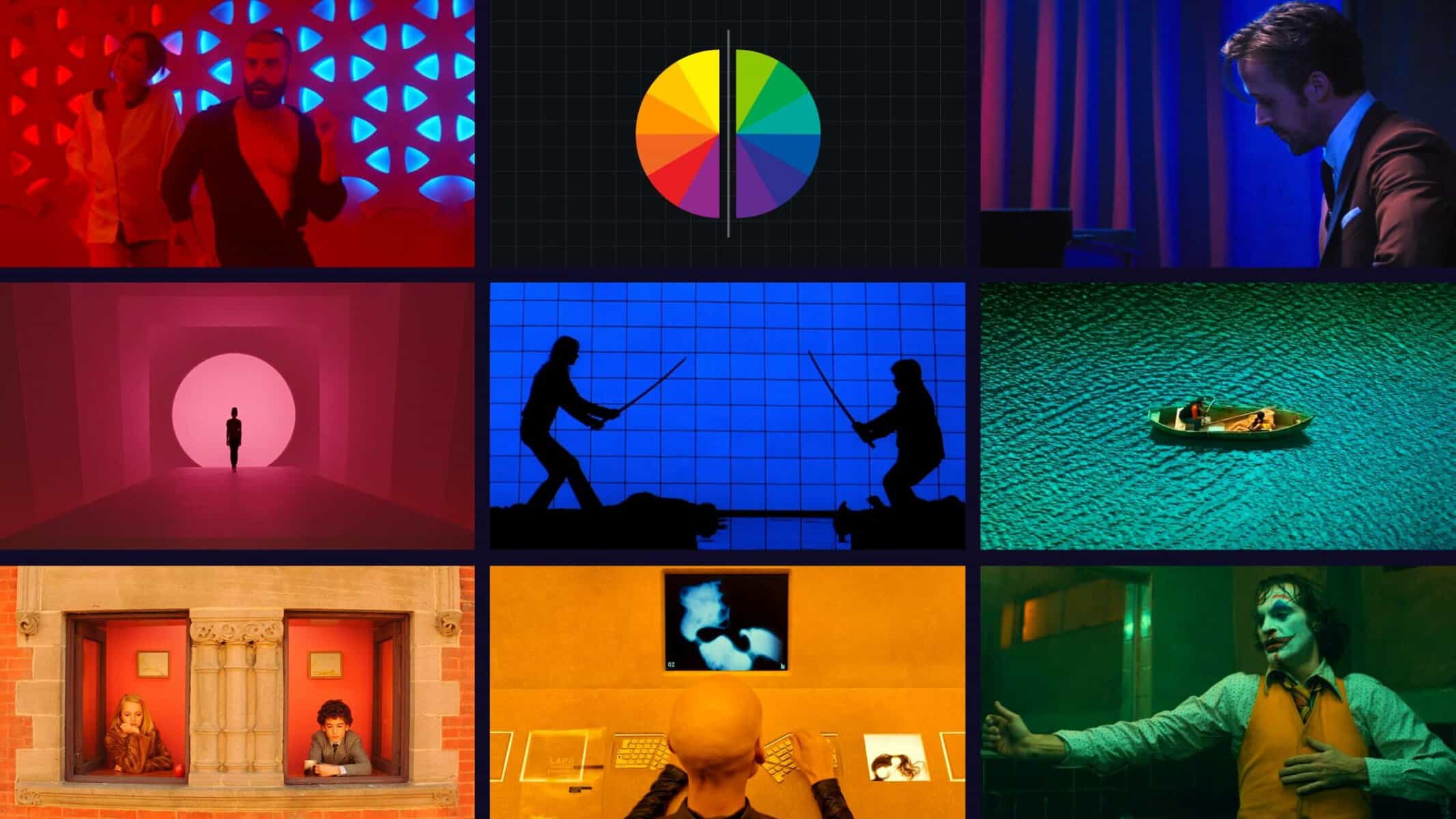
In photography, “Fill Light” is significant in providing contrast and extra depth to photos. Color temperatures can alter the fill light and enhance the picture’s mood.
In the field of Horticulture, the cultivation of plants in a small-scale area, the color temperature plays an important role. Incandescent or LED grow lights work are lower-temperature lights that boost the growth of plants in the door.
Similarly, it’s common to use warm light to grow birds and other animals. It provides warmth and energy for the initial stages of healthy development.
Here are the estimated ranges of color temperature that will help you guess the right lighting for your project. We have divided the areas into three categories to give you the best approximations.
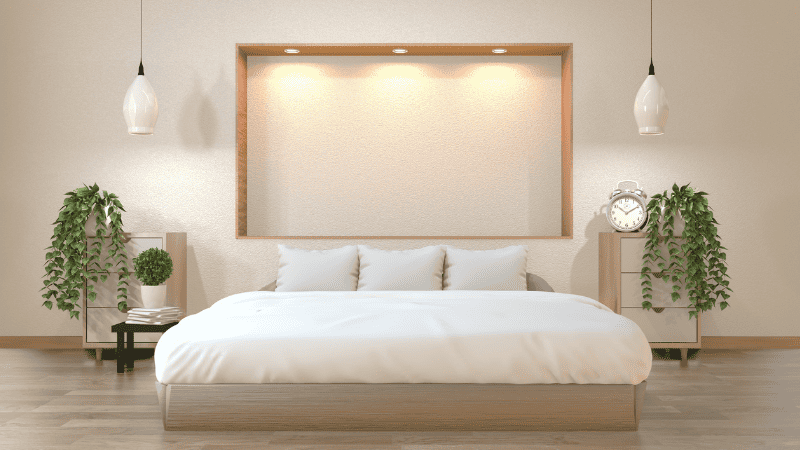
Residential areas generally require a lower color temperature. For a cozy, intimate, and relaxing ambiance in bedrooms, it’s best to use warm white lighting with a color temperature of around 2700K to 3000 K.
We recommend neutral white lighting around 3500K for a comfortable and inviting environment in living rooms and guest areas.
Lastly, for a place like a kitchen where hectic tasks like cooking and baking are done, we need more bright light and cooler temperatures around 4000K.
Working and learning spaces inhibit different kinds of psychology. The focus here is on enhanced activity and productivity while keeping the stress level moderate.
Offices and meeting rooms need neutral white lighting, approximately 3500K to 4500K, for better efficiency of employees. Anything cooler than this will affect the atmosphere negatively, a mistake many professionals make.
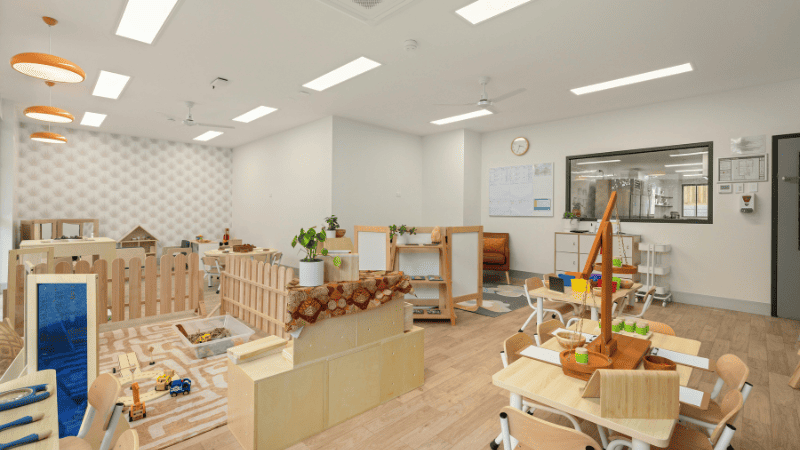
However, a classroom is different. Here, you can use a range of color temperatures, but neutral white light (around 4000K) can offer a balanced environment for learning tasks.
You’ll probably notice that we have included an entire visible light spectrum (kelvin) in this category, as each area requires a specific kind of color temperature for task lighting. Take Hospitals, for instance.
The patient rooms might have warm white lighting (around 3000K) for comfort and healing, while the surgery rooms may use cooler lighting (about 5000K) for accuracy and precision. Having cooler lights in the patient’s room can hinder recovery.

When it comes to art galleries, the intensity and type of color temperature can affect the paint job of any art piece, so the situation is more critical. Here, cool white lighting, typically around 4000K to 5000K, works best for art preservation and visual clarity.
The same goes for restaurants and retail stores, as lighting directly affects business and profits. Restaurants require a mix of color temperatures, from intimate candlelight to bright, warm lights for parties.
Retail store owners use bright, cool white lights to make products and food appear fresher and more appealing.
Similarly, jewelry stores employ bright, cool white LED lights with a color temperature of around 5000K to create a sparkling effect on precious jewelry, enhancing its overall appeal.
Lastly, fitness centers and gyms should have cool white CCT, around 4000K to 5000K, to create a bright and energizing environment for exercise.
Still confused about the right color temperature? We don’t blame you! Every lighting project has unique characteristics; you should deal with them accordingly. Here are things you can consider while selecting the right color temperature.

It’s a no-brainer that your walls, curtains, and furniture color should complement your lighting color temperature. Shades in the green, blue, black, grey, and white color spectrum are best suited for cooler color temperatures ranging from 3500K to 4000K.
Similarly, the shades of red, pink, orange, yellow, and off-white go for lower color temperatures ranging from 2700K to 3500 K. The picture below perfectly depicts the relationship between the color and temperature of the lighting.
Materials have different light absorption properties. A lower color temperature might better suit wooden floors, ceilings, stone walls, and vintage furniture. Similarly, metal or steel furniture looks better in cooler lighting tones.
The theme of the place can also be a deciding factor. If you are going for a modern, contemporary style, cooler temperatures are better, even if the colors don’t necessarily complement the temperature.
Warmer temperatures suit a retro, classic, and vintage look. So, establishing a theme beforehand will help you make the right decision regarding color temperature.
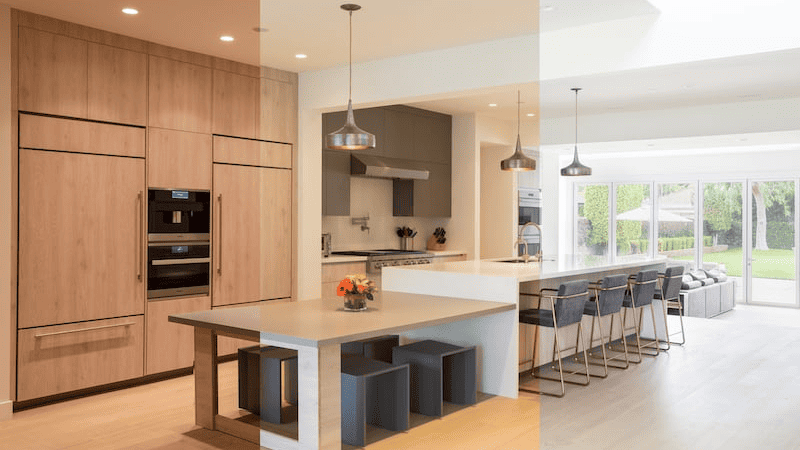
This is the tricky one. If you have access to natural sunlight in your place, you must be careful when selecting the color temperature. Typically, this happens when you have large windows or a sunroof which allows natural sunlight to illuminate the space.
In such a case, you can choose adjustable color temperature LED lights, which allow you to completely control the color temperature of the light.
Adjust it according to the time of the day and have a perfectly balanced lighting design.
However, these lights can be expensive, so the alternative is to choose a cooler lighting temperature that best compliments the light source coming into your space most of the time. This will help eliminate the contrasting temperatures and provide uniform lighting.
Thanks to continuous development in Light-Emitting Diode (LED) technology, we can now adjust the color temperature in indoor lighting design.
Gone are the days when you had to stick to a single color or temperature. Here are ways to change the color temperature of LED lights.
Some LED light bulbs offer adjustable color temperatures, enabling users to switch between four to five color settings. These temperature settings can be controlled through a switch on the fixture, a wall-mounted control, or a remote control.
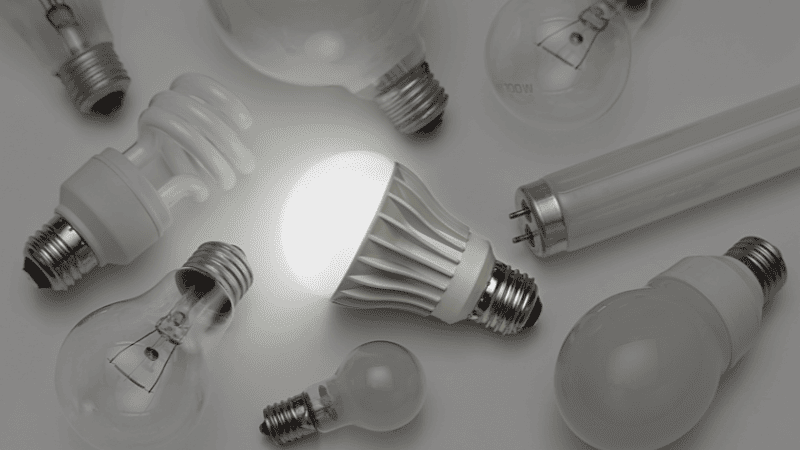
Smart LED Bulbs can adjust way more than just color temperature. They can give total control over the color palette, brightness, timer feature, music synchronization, and much more.
They mix red, blue, and green colors to create thousands of different hues and shades on a whim.
All of this is controlled through a remote or a smartphone app. These are the most versatile lighting LED fixtures. However, they are a bit expensive compared to other fixtures.
Tunable white LEDs work a little differently than Smart LEDs. They combine different shades of white instead of RGB colors, allowing the user to adjust color temperature over the entire Kelvin scale.
Tunable white LEDs give you the most freedom when selecting the color temperature.
Cinematographers often use CCT gels to alter the temperature of any light source. These thin films wrap around the bulb source and create the desired effect.
It’s the easiest and most effective way to change the color temperature for camera work. However, it’s not the most feasible solution for indoor lighting, where a more permanent change is required.

It’s a misconception that altering the voltage changes the color temperature, which is false. Changing the voltage of a lamp affects its intensity or brightness only. So, if you are looking for a proper solution, go for the above-mentioned options.
Yes, light emitted from LEDs has color temperatures. They can have adjustable and varying light color temperatures. This was impossible before, as incandescent, fluorescent, and halogen bulbs had fixed color temperatures.
Thanks to modern lighting technology, LED bulbs can emit light on a complete kelvin scale temperature spectrum from 2700 K (candlelight) to 6000 K (daylight).
Additionally, you also have the option of using CCT conversion filters or gels to adjust the temperature to your desired color.
A high color temperature of around 4000 K, also called daylight, is best for reading and studying. Ensure bright enough lights for appropriate vision and reduced eye strain.
High CCT mimics natural sunlight, so we feel more attentive and energetic. Another factor at play here is a color rendering index (CRI).
Higher CRI values make objects more vibrant and clear, making strenuous tasks like reading and studying easier. If you use an electronic device, ensure you have enough lighting in the surroundings with blue light filters on for better eye protection.
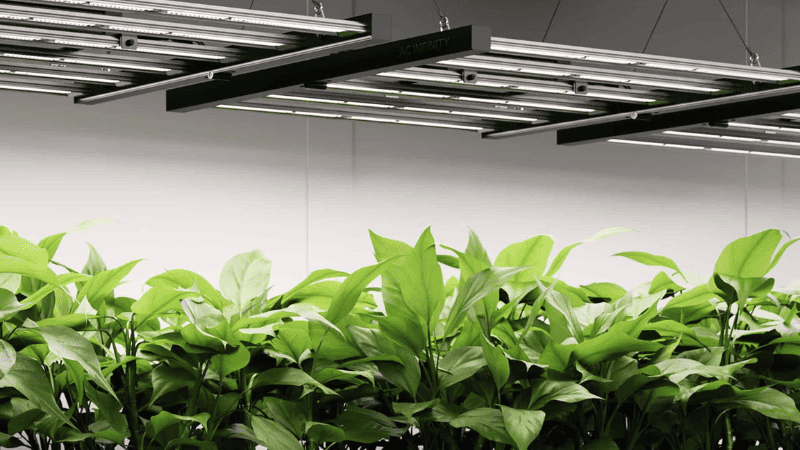
Artificial lights used for plant growth are called “Grow Lights” and typically fall between 2700 K and 3000 K in color temperature range. Warm color temperatures stimulate photosynthesis, which is key in plant growth.
Some modern grow light manufacturers promote only Red and Blue LEDs for grow lights; however, the research on this still lacks definite proof. So, we recommend sticking to the convention for optimal results.
The most relaxing color temperatures are warmer shades of white light like candlelight, incandescent bulb or golden hour, warm white (2700 K to 3500 K), etc.
However, depending on the mood and ambiance of the place, CCT on the higher spectrum, like daylight and cool white (3500K to 4000 K), can be relaxing as well.
Color temperature ranges from 2700 K to 3500 K at the lower end of the Kelvin scale. They are known as warmer temperatures. The characteristic feature common in them is the presence of red, yellow, and orange hues in the visible light.
As the temperature gets higher, the shades turn whiter. These color temperatures invoke a sense of calm, warmth, comfort, and coziness.
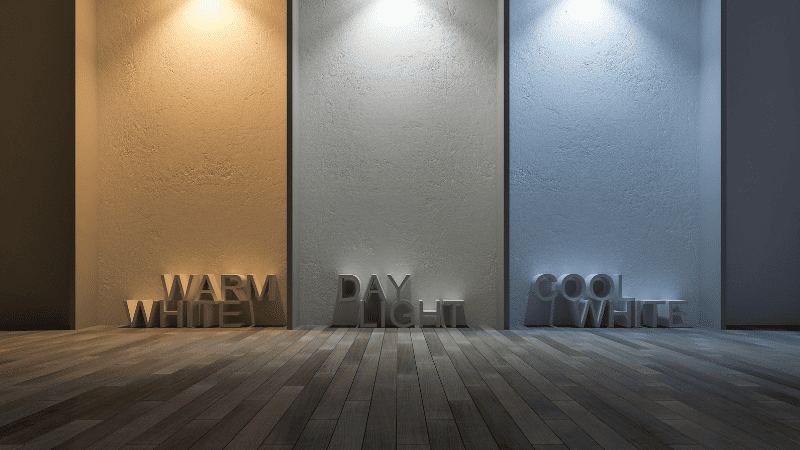
Color temperatures ranging between 4000 K to 6000 K are cooler shades that mimic daylight. You’ll notice more white and bluish hues in such a range.
For reference, sunlight is around 5700 K on a clear day, and on moderately overcast days, it’s 6500 K.
Anything number higher than 6000 K turns the color temperature bluer. It’s hard to distinguish between such a color range and is only significant when dealing with intense work like cinematography.
Great job on reaching the end of our comprehensive guide! Throughout this journey, we’ve explored various facets of color temperature and its practical applications for optimal results.
You’ve also gained insights into the factors influencing color temperature and how to harness them to achieve the perfect lighting ambiance.
We hope you’ll find the ideal shade for your indoor and other lighting endeavors as you experiment with different color temperatures.
Risun has an extensive list of indoor and outdoor lighting fixtures, offering various shapes, sizes, and multiple color temperatures to meet diverse market needs.
We’re your one-stop shop, providing complete supply chain management, from supplier sourcing to quality compliance and timely deliveries.
Energize your business with Risun. Contact us today!
Comprehensive Lighting Solutions for MRO Wholesalers and Professionals
send your inquiry
Hi, I'm the author of this post, and I have been in this field for more than 15 years. If you want to wholesale lighting fixtures or lighting related product, feel free to ask me any questions.
Learn More >>Download our catalog to view all of our lighting products.
Ready to get started ?
Send Your InquiryOur team will get back to you promptly

please
download
Get notified about new products
Our team will get back to you promptly!
Add your first comment to this post